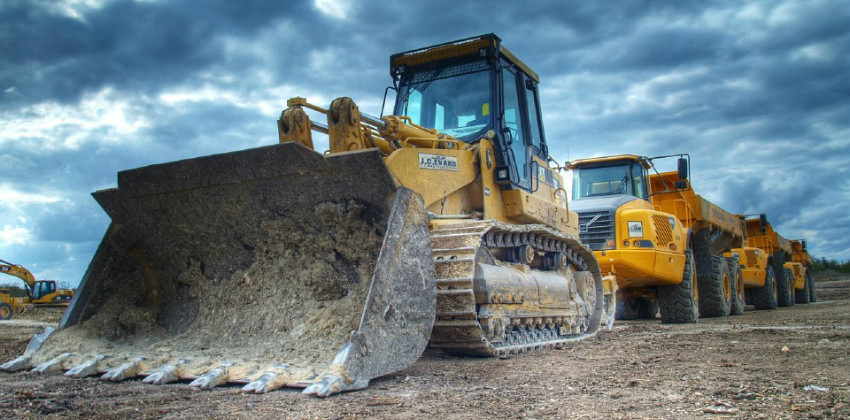Boom Lift Rental: Get To New Levels Safely
Wiki Article
Renting Out Vs. Acquiring Building Tools: Making the Right Option for Your Project
When starting a building and construction task, among the essential choices that predict supervisors and stakeholders deal with is whether to acquire or lease building and construction equipment. Both alternatives have their downsides and advantages, making the selection a crucial one in the task planning process. The decision depends upon various factors such as price factors to consider, task duration, devices upkeep, threat, scalability, and flexibility administration. Each component plays an essential function in determining one of the most suitable path for the task's tools requirements. equipment rental company. Let's discover these variables even more to understand how they influence the decision-making procedure and eventually the success of the task.Cost Factors To Consider
When examining the economic aspect of renting out versus acquiring construction tools, the lasting expenditures and ahead of time expenses need to be carefully considered. Renting out tools typically needs reduced first repayments contrasted to acquiring, making it an eye-catching alternative for temporary tasks or specialists with spending plan restraints. Leasing removes the demand for big resources expenses and minimizes the monetary danger related to equipment ownership, such as upkeep and depreciation expenses. Nonetheless, in the future, consistently renting out equipment can gather greater expenses than buying, specifically for extended projects.On the other hand, acquiring building and construction devices entails greater upfront costs yet can lead to long-term cost savings, especially for frequent customers or long-term tasks. Possessing devices supplies flexibility, convenience, and the potential for resale value once the project is completed. In addition, possessing tools enables personalization and familiarity with specific equipment, possibly raising efficiency and productivity on-site. Eventually, the choice in between leasing and getting construction devices pivots on the job's period, frequency of usage, spending plan considerations, and long-lasting economic goals.
Task Duration

On the other hand, for lasting tasks or ongoing construction work, buying tools might be the more affordable alternative. Getting devices can result in set you back savings in the long run, especially if the tools will be regularly used. Furthermore, owning tools gives a feeling of control over its availability and permits for modification to fit details project demands.

Tools Maintenance
Offered the essential role task period plays in figuring out the most affordable approach between acquiring and renting construction tools, the emphasis currently changes towards checking out the crucial facet of devices maintenance. Appropriate upkeep is vital for making sure the ideal performance and durability of construction devices. Renting out tools frequently includes the advantage of having well-maintained machinery provided by the rental firm. This can ease the worry of maintenance jobs from the task proprietor or specialist, conserving time and initiative. On the other hand, having equipment calls for an aggressive technique to upkeep to avoid malfunctions, ensure security, and prolong the tools's life-span. Regular evaluations, maintenance, and timely repairs are necessary to keep owned tools in leading functioning condition. Factor in upkeep costs when choosing between buying and leasing, as overlooking maintenance can lead to costly repair work, downtime, and job hold-ups. Eventually, a well-maintained construction equipment fleet, whether rented out or owned, is crucial for the successful and efficient conclusion of building and construction tasks.Flexibility and Scalability
In the realm of building tools management, the element of adaptability and scalability holds substantial value for task performance and resource utilization. Deciding to lease building and construction equipment supplies a high level of adaptability as it enables for the quick change of tools types and quantities based on the evolving demands of a job.Renting construction devices supplies the advantage of easily scaling operations up or down as project needs change. Professionals can promptly trade or include equipment to match the task's altering requirements without the restraints of possessing assets that may become underutilized or obsolete.
Threat Administration
Reliable risk monitoring in building and construction tools procedures is extremely important to guaranteeing task success and mitigating potential financial losses. Building and construction tasks inherently include various dangers, such as devices failures, mishaps, and task hold-ups, which can considerably influence the task timeline and budget. By carefully taking into consideration the threats associated with owning or renting construction devices, job managers can make enlightened choices to decrease these prospective dangers.Leasing building equipment can provide a level of risk mitigation by transferring the obligation of maintenance and repairs to the rental business. This can reduce the economic concern on the project owner in situation of unexpected tools failures (scissor lift rental). In addition, renting gives the adaptability to gain access to specialized equipment for specific project phases, reducing the risk of having underutilized machinery
On the other hand, possessing building devices provides a sense of control over its usage and maintenance. Nevertheless, this additionally implies birthing the complete duty for repair work, upkeep prices, and devaluation, enhancing the economic dangers connected with equipment ownership. Careful risk analysis and factor to consider you could try here of variables such as task period, equipment application, and maintenance demands are essential in establishing the most suitable alternative for efficient threat administration in my latest blog post construction projects.
Final Thought
Finally, when deciding between renting and getting building and construction tools, it is essential to think about cost, job duration, equipment maintenance, flexibility, risk, and scalability monitoring. Each factor plays a critical role in determining the most ideal choice for the project at hand. By thoroughly examining these aspects, task managers can make an enlightened decision that aligns with their spending plan, timeline, and total project objectives.
Report this wiki page